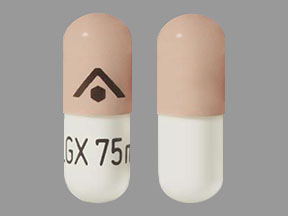Encorafenib Disease Interactions
There are 5 disease interactions with encorafenib.
Encorafenib (applies to encorafenib) hepatic impairment
Moderate Potential Hazard, Moderate plausibility. Applicable conditions: Liver Disease
A recommended dose of encorafenib has not been established for patients with moderate (Child-Pugh B) or severe (Child-Pugh C) hepatic impairment. Dose adjustment is not recommended in patients with mild hepatic impairment (Child-Pugh A).
References (1)
- (2024) "Product Information. Braftovi (encorafenib)." Array BioPharma Inc.
Encorafenib (applies to encorafenib) cardiomyopathy
Moderate Potential Hazard, Moderate plausibility.
Cardiomyopathy, manifesting as left ventricular dysfunction, has been reported with use of encorafenib in combination with binimetinib. The safety of encorafenib has not been established in patients with baseline ejection fraction below 50% or below the institutional lower limit of normal. Patients with cardiovascular risk factors should be closely monitored during therapy with encorafenib. Assess ejection fraction at baseline, 1 month after initiation, and every 2 to 3 months during therapy. Withhold, reduce dose, or permanently discontinue therapy based on severity of adverse cardiovascular effects.
References (1)
- (2024) "Product Information. Braftovi (encorafenib)." Array BioPharma Inc.
Encorafenib (applies to encorafenib) QTc prolongation
Moderate Potential Hazard, Moderate plausibility. Applicable conditions: Long QT Syndrome, Congestive Heart Failure, Hypokalemia, Magnesium Imbalance
Encorafenib is associated with dose-dependent QTc interval prolongation in some patients. Monitor patients who already have or who are at significant risk of developing QTc prolongation, including patients with known long QT syndromes, clinically significant bradyarrhythmias, severe or uncontrolled heart failure and those taking other medicinal products associated with QT prolongation. Correct hypokalemia and hypomagnesemia prior to and during therapy with encorafenib. Withhold, reduce dose, or permanently discontinue for QTc > 500 ms.
References (1)
- (2024) "Product Information. Braftovi (encorafenib)." Array BioPharma Inc.
Encorafenib (applies to encorafenib) renal impairment
Moderate Potential Hazard, Moderate plausibility. Applicable conditions: Renal Dysfunction
A recommended dose of encorafenib has not been established for patients with severe renal impairment (CrCl < 30 mL/min). Caution and monitoring is advised if used on these patients. No dose adjustment is recommended for patients with mild to moderate renal impairment (CrCl 30 to < 90 mL/min).
References (1)
- (2024) "Product Information. Braftovi (encorafenib)." Array BioPharma Inc.
Encorafenib (applies to encorafenib) visual disturbances
Moderate Potential Hazard, Moderate plausibility. Applicable conditions: Visual Defect/Disturbance
Encorafenib, administered in combination with binimetinib, may cause uveitis, including iritis and iridocyclitis. Assess for visual symptoms at each visit and perform ophthalmologic evaluations at regular intervals, or as indicated, for new or worsening visual disturbances.
References (1)
- (2024) "Product Information. Braftovi (encorafenib)." Array BioPharma Inc.
Switch to consumer interaction data
Encorafenib drug interactions
There are 630 drug interactions with encorafenib.
Encorafenib alcohol/food interactions
There is 1 alcohol/food interaction with encorafenib.
More about encorafenib
- encorafenib consumer information
- Check interactions
- Compare alternatives
- Reviews (1)
- Side effects
- Dosage information
- During pregnancy
- Drug class: multikinase inhibitors
- Breastfeeding
- En español
Related treatment guides
Drug Interaction Classification
| Highly clinically significant. Avoid combinations; the risk of the interaction outweighs the benefit. | |
| Moderately clinically significant. Usually avoid combinations; use it only under special circumstances. | |
| Minimally clinically significant. Minimize risk; assess risk and consider an alternative drug, take steps to circumvent the interaction risk and/or institute a monitoring plan. | |
| No interaction information available. |
See also:
Further information
Always consult your healthcare provider to ensure the information displayed on this page applies to your personal circumstances.


